Exploring therapeutic landscapes in Queensland histories: World War Two
By Mimi Tsai | 15 December 2023
Guest blogger: Dr Mimi Tsai - 2022 John Oxley Library Fellow
This blog was written by 2022 John Oxley Library Fellow Dr. Mimi Tsai, as part of the fellowship project, Vernacular Landscapes and Queensland Memories: Exploring Queensland’s resilience through narratives of therapeutic environments. It is a continuation of an earlier first blog post about St Helena Prison Farming. This time, we will explore therapeutic landscapes in war contexts.
This piece may contain names, images and voices of deceased Aboriginal and Torres Strait Islander peoples as well as war-related materials which some people may find confronting and disturbing.
This blog was written by 2022 John Oxley Library Fellow Dr. Mimi Tsai, as part of the fellowship project, Vernacular Landscapes and Queensland Memories: Exploring Queensland’s resilience through narratives of therapeutic environments. It is a continuation of an earlier first blog post about St Helena Prison Farming. This time, we will explore therapeutic landscapes in war contexts. This piece may contain names, images and voices of deceased Aboriginal and Torres Strait Islander peoples as well as war-related materials which some people may find confronting and disturbing.
In recent years, there is increasing research evidence showing the therapeutic benefits of people making connections to nature. Benefits include stress reduction, lowering blood pressure, and promoting positive emotions. Outdoor space affords natural distractions and restorative effects. Even without awareness of these findings, people are instinctively drawn to outdoor space for the same reasons. In this blog, I explore the role of outdoor space in Queensland during World War Two. I searched for those incidental moments in which outdoor spaces added extra therapeutic meanings for those who engaged with it. These extra meanings were significant in day to day living experiences and provided therapeutic effects to people. While gardens and outdoor spaces cannot reduce the full impact of war, they can provide tangible benefits and contribute to the physical and emotional well-being of individuals and communities facing challenging circumstances. In these contexts, the outdoors played an important role in developing a feeling of solace and sanctuary for people.
These contexts include backyard gardens as a source of food, as air raid bomb shelters, as places for wartime fun and temporary escape or as places to make connection with loved ones and to get closer to nature for healing purposes. Although these are all very different, in many ways they share a similar dynamic in the ways which people turn to outdoor spaces during troubling times.
Outdoor space for food security
I have found that it is almost part of Queenslanders’ collective memories that backyard gardens provide as a source of food security during World War Two. Queensland was in an era of food shortage and resource limitations. Rationing was part of the day-to-day experiences. People intrinsically turn to their home backyards to grow fruits, vegetables, and herbs as supplement food supplies and reduce dependency on rationing. It created a sense of self-sufficiency and control.
In 1943, Charles Bowly’s correspondence provides a detailed description of civilian life and conditions in Brisbane during the Second World War. It describes the shortage of eggs, whisky and beer, petrol rationing and Bowly's efforts at growing vegetables in his home garden. It also describes Bowly's efforts at growing vegetables in his home garden. It was part of the collective memories that older generations had when they grew up. Backyard space provided as a sanctuary for food security. He wrote:
“Owing to shortage of petrol and tyres, there is little car travelling for pleasure, and although I have a gas producer. I have only been to Southport twice this year as tyres have to be considered. My weekends are spent in the garden, some of which is under vegetable cultivation, and I have a fairly good crop of cabbages, carrots, tomatoes, beetroot, parsnips, lettuce, cauliflower and some peas which are showing their heads above the ground. The future of the hardener is uncertain as the Lord Mayor advic[s]es us that unless there is rain shortly the watering of gardens will be restricted. Like everything else, the water, Whisky and beer by the bottle are unobtainable and drinking hours in hotels are restricted”
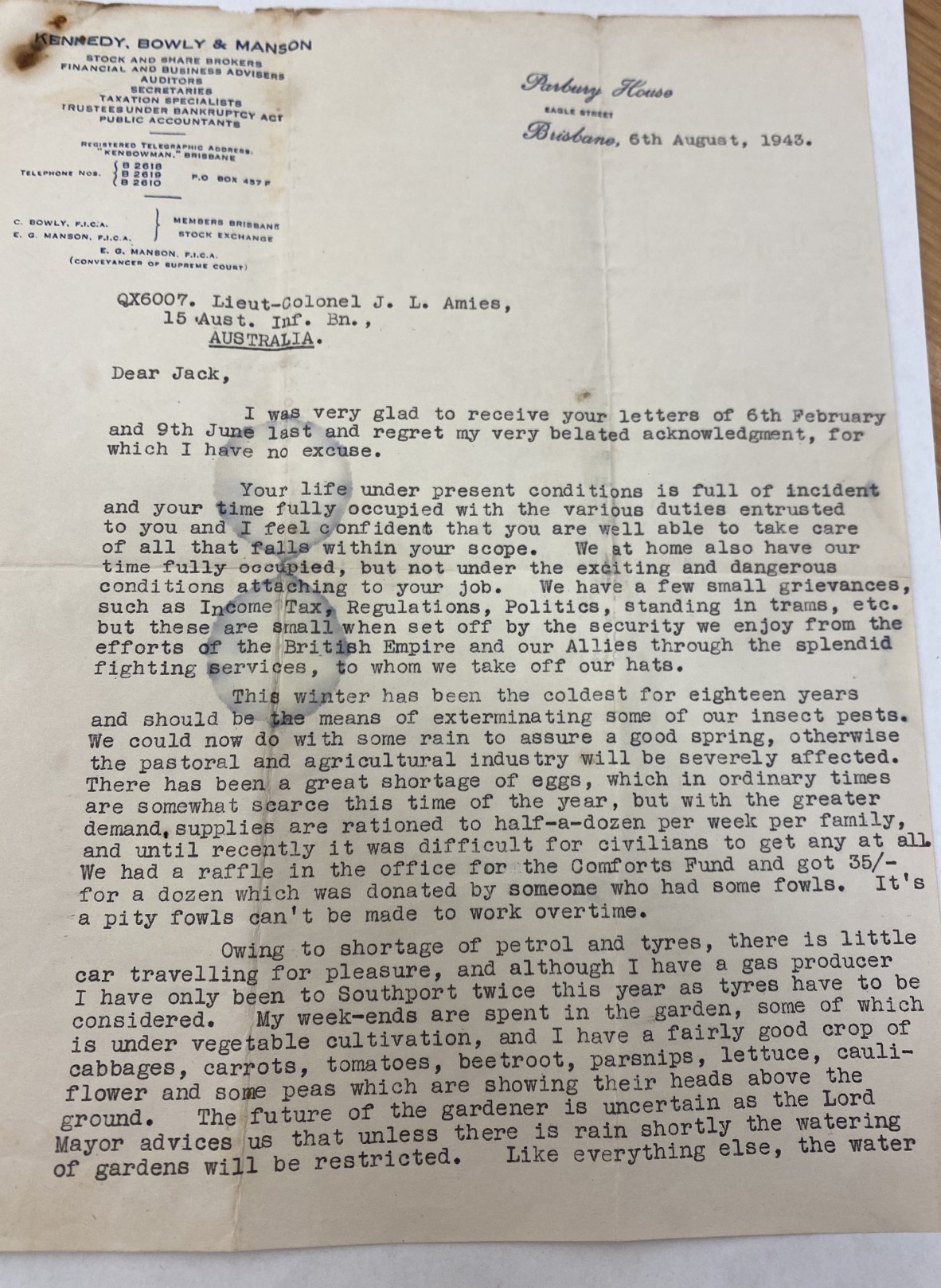
29769, Charles Bowly Correspondence, John Oxley Library, State Library of Queensland.
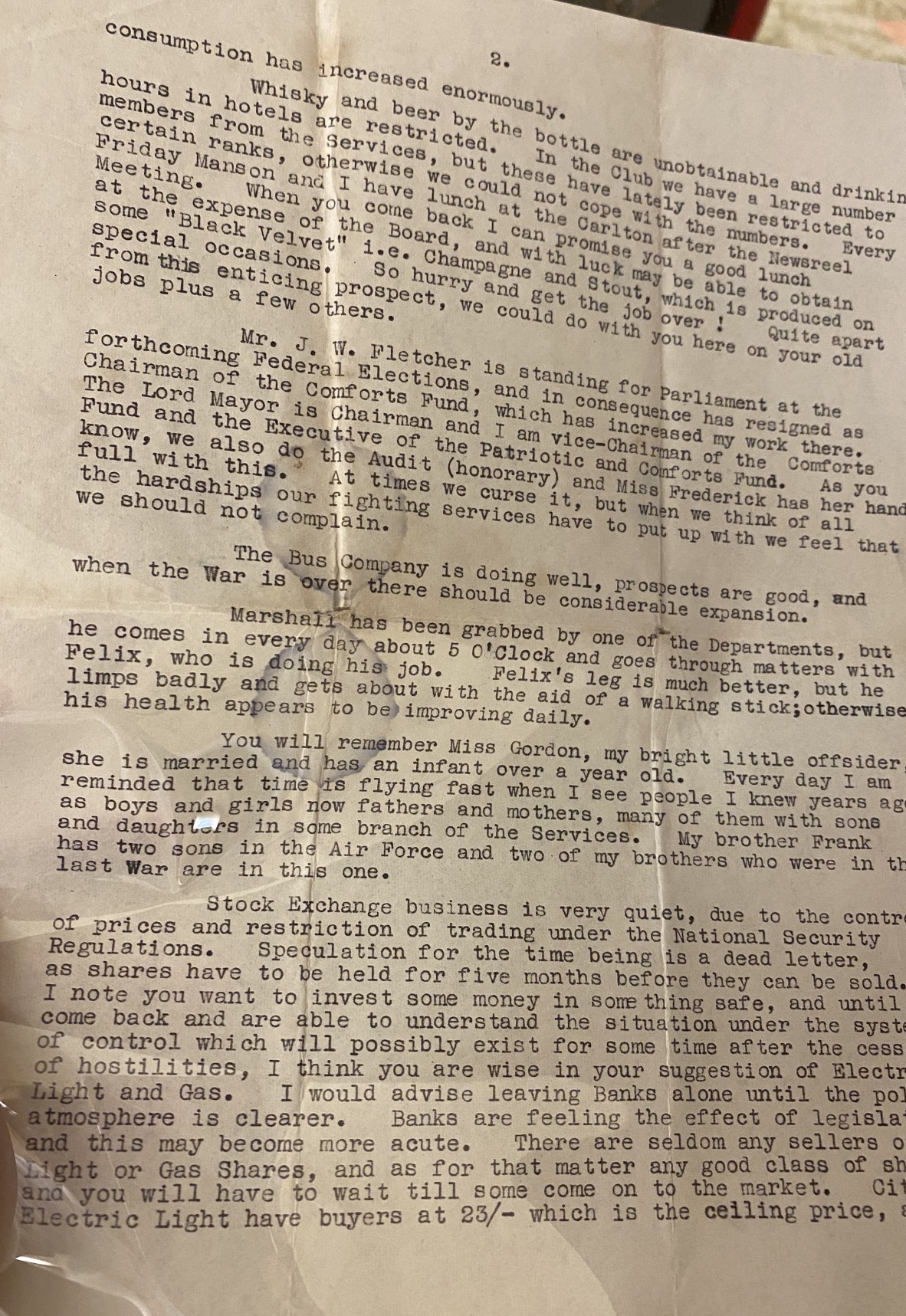
29769, Charles Bowly Correspondence, John Oxley Library, State Library of Queensland.
Outdoor as shelters
With limitations of resources during war time, people also sought shelters in their home backyards.
Air raid shelters were also a common feature to see in Queensland backyards during the second world war.
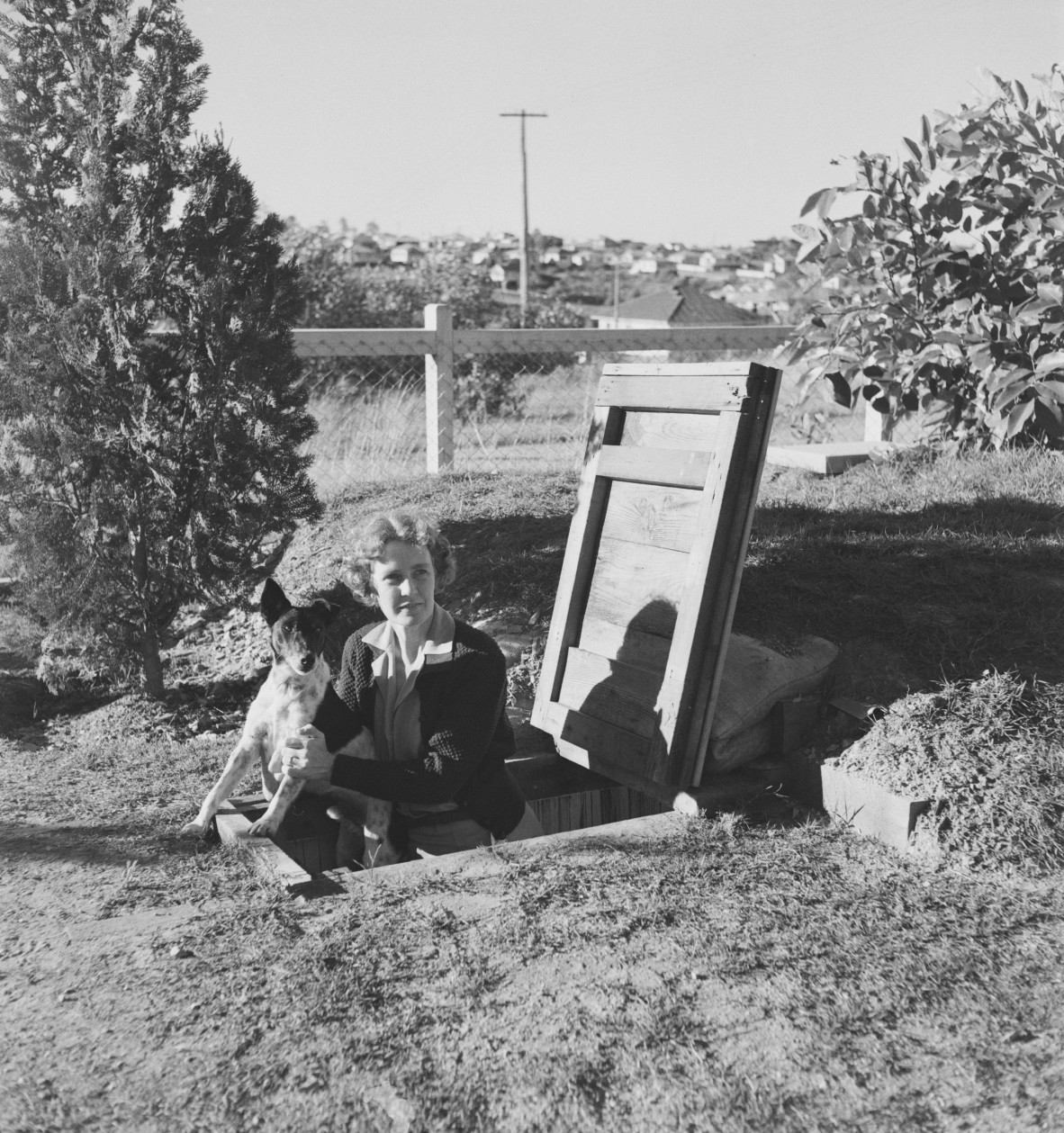
Elsie with her dog at the entrance to to an air-raid shelter in the backyard at Camp Hill, 1939-1945
The image below from John Oxley Library collection shows American and Australian soldiers taking time out from the war with two female friends in a backyard air-raid shelter at Manly.
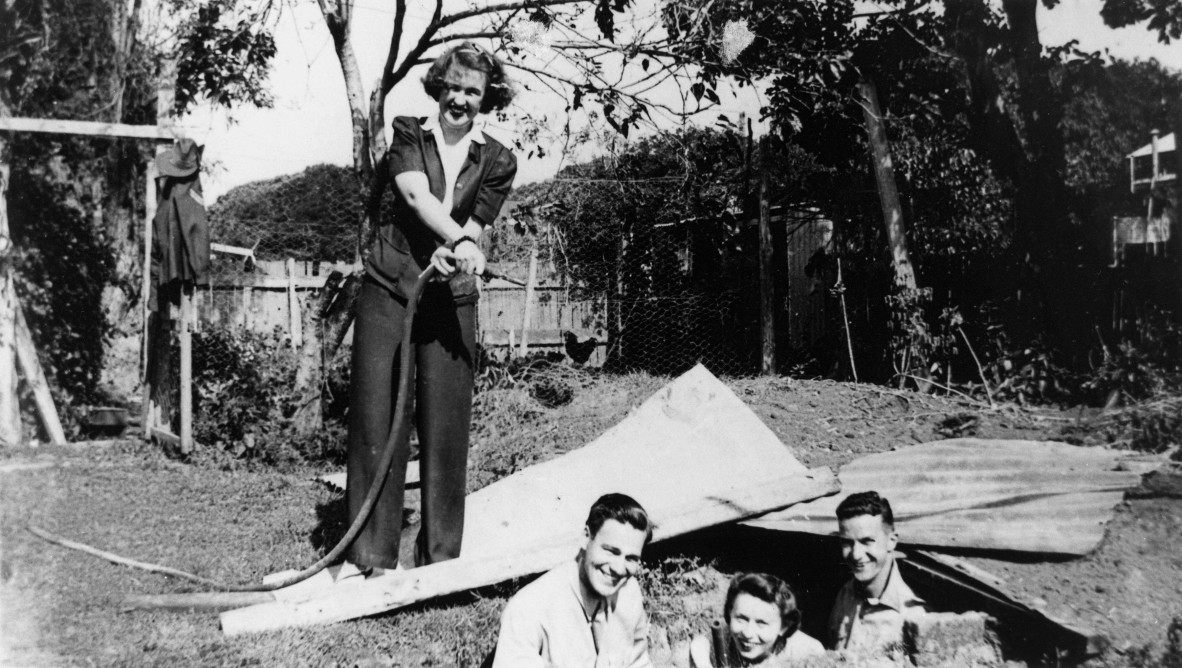
Doreen Symthe (standing) with American and Australian soldiers in the backyard air-raid shelter in Manly. Image courtesy of Doreen Symthe.
Gardening as war-time activities
In a different context, gardening is also part of the war-time activities. Brisbane Boys Colleagues Magazine Portal suggests gardening as one of the recommended War-time activities for the boys as a result of labour shortages and staff reduction. It says:
For the first half of the year no work was done in the vegetable gardens, which had been so successful last year. However, during the latter half, groups of four boys were given garden plots which were soon cultivated and planted with various vegetables…..
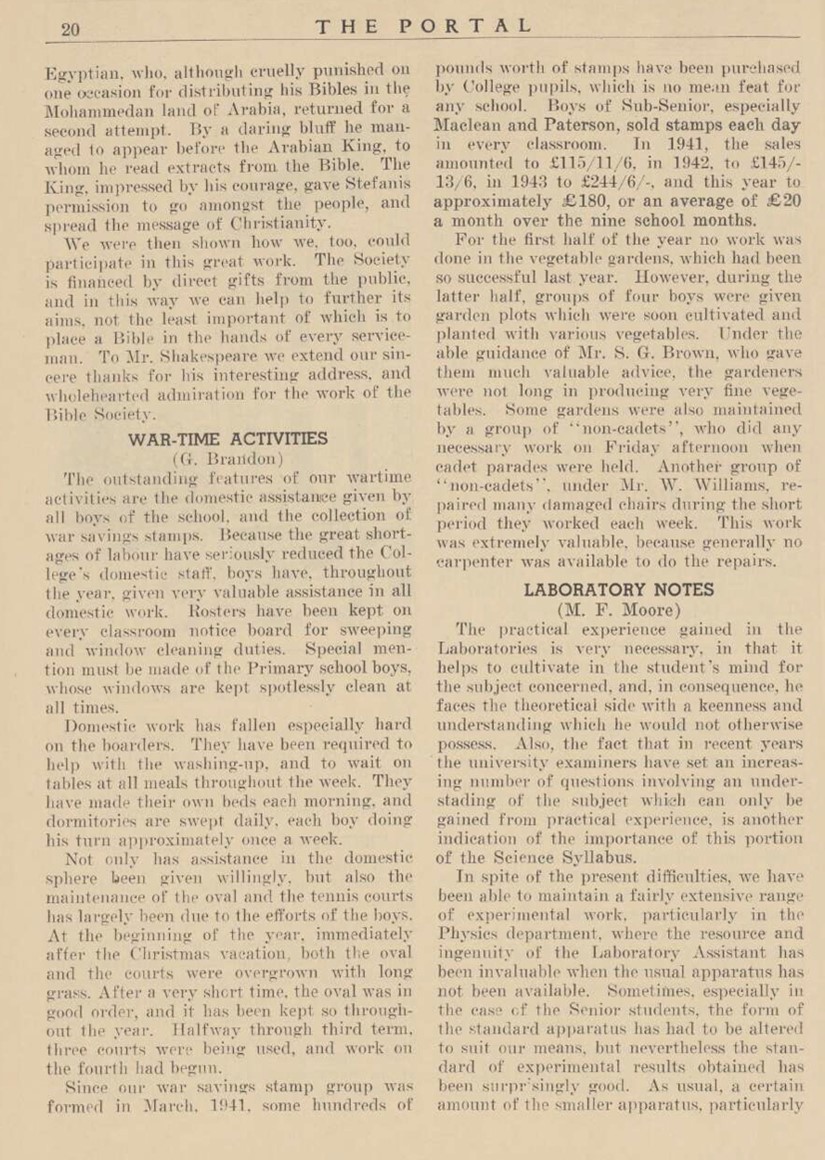
Excerpt from The Portal. Brisbane Boys' College. (1942). Retrieved November 12, 2023, from http://nla.gov.au/nla.obj-1553549732
By searching through Australian War Memorial photos, I found some images that shows soldiers working in veggie patch. The act of gardening, nurturing plants and being in nature can provide a temporary escape from the harsh realities of war, offering a sense of control and a feeling of comfort in a time of distress.
Townsville, Qld. Warrant Officer (WO) Hanna RAAF of Caulfield, Vic, with hoe, and WO A. K. Derrick of Newmarket, Qld, working in the vegetable garden at a RAAF Station at St Ann's Barracks. Australian War Memorial.
Townsville, Qld. Aircraftman 1 S. T. Reynolds of Bundaberg, Qld, No. 1 Reserve Personnel Pool (RPP), RAAF, at the Aitkenvale base, working in the vegetable garden with the tomato plants. Australian War Memorial.
Outdoor spaces offer opportunities for recreation, relaxation and temporary escape. This was important during the war time. Backyard space could be a background scene for pin up girls photo competitions. From Fae Deviney Collins, nee King, photograph album 1886-2010., the diary annotated:
Mum was very keen on competitions for wartime pin up photos and these look as if they’ve been posted a few times. I don’t remember that they ever won anything but I was only fifteen.
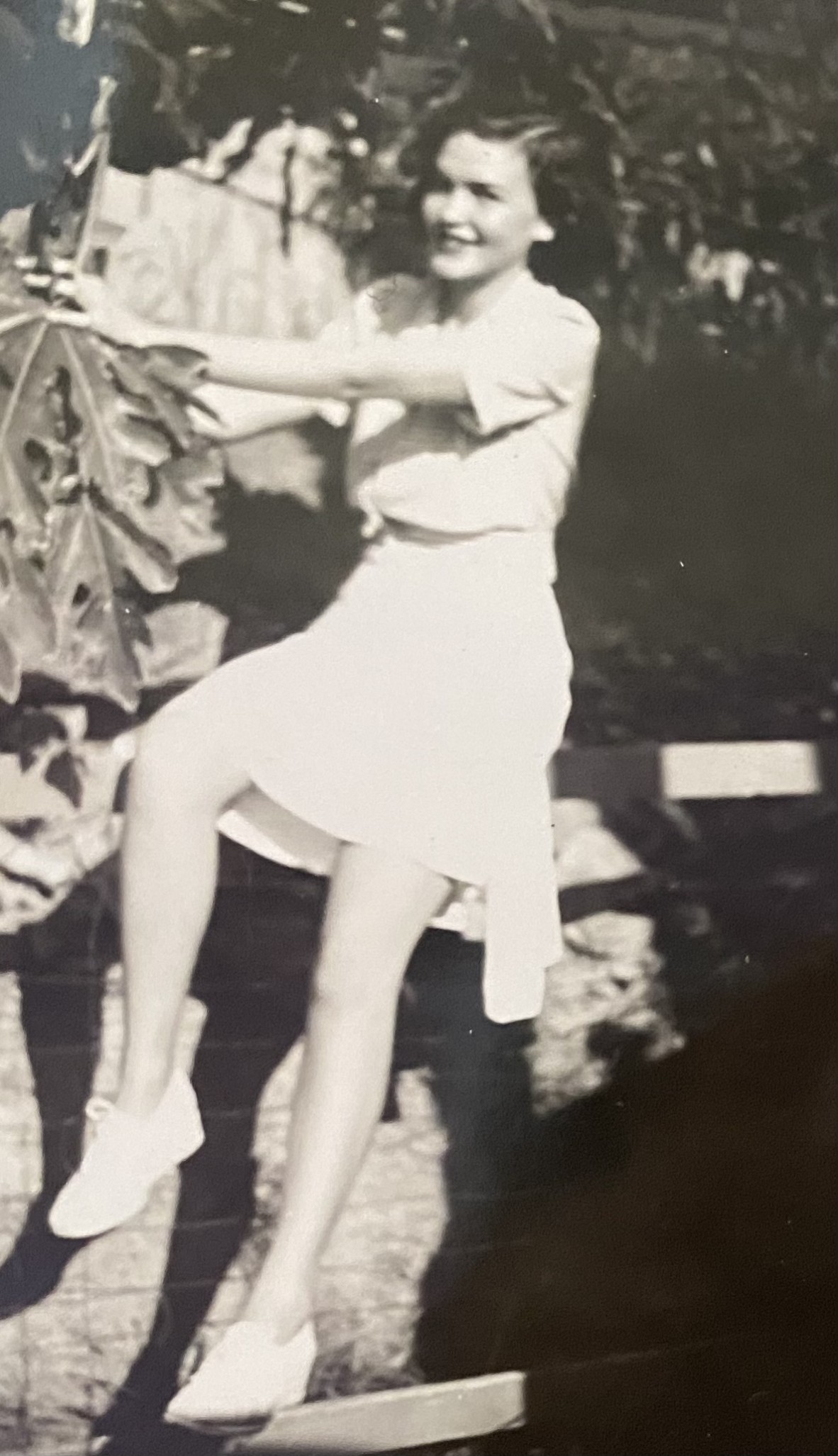
31042, Fae Deviney Collins, nee King, Photograph Album, John Oxley Library, State Library of Queensland.
Further in the family album from Fae Deviney Collins, nee King, photograph album 1886-2010., the diary annotated:
Wartime - as a teeager, you made your own fun; petrol was rationed and only your parents drove the car. Picnics were popular/ You caught the train to Murphy’s Creek, boiled the billy, hiked and caught the late train home.
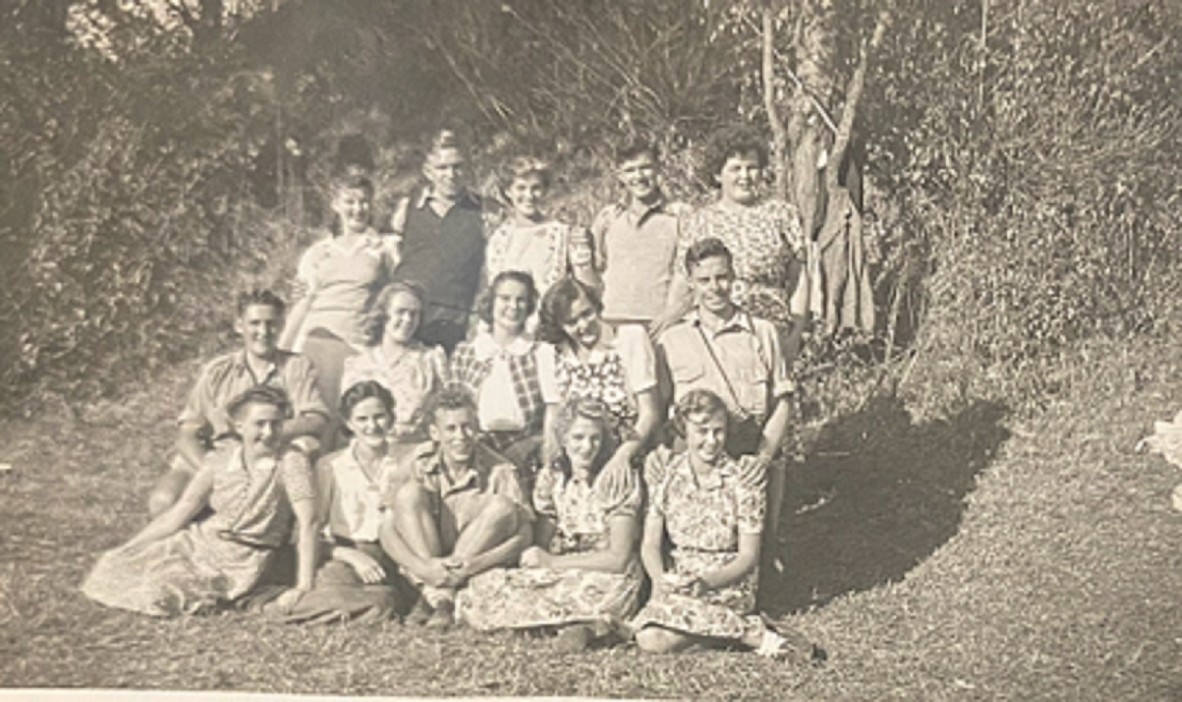
Black and White photograph of Fae Deviney Collins, nee King with family and friends in a garden. 31042, Fae Deviney Collins, nee King, Photograph Album. John Oxley Library, State Library of Queensland.
Outdoor as healing places
Outdoors also provides experiences for people to make connections to nature, which is so vital to staying positive during difficult times. The natural outdoor environment inherently facilitated a therapeutic healing process for soldiers. Below is a snapshot of an unknown location in Queensland Army barracks during the war time. There were no further explanations of this image of why patients were outside.
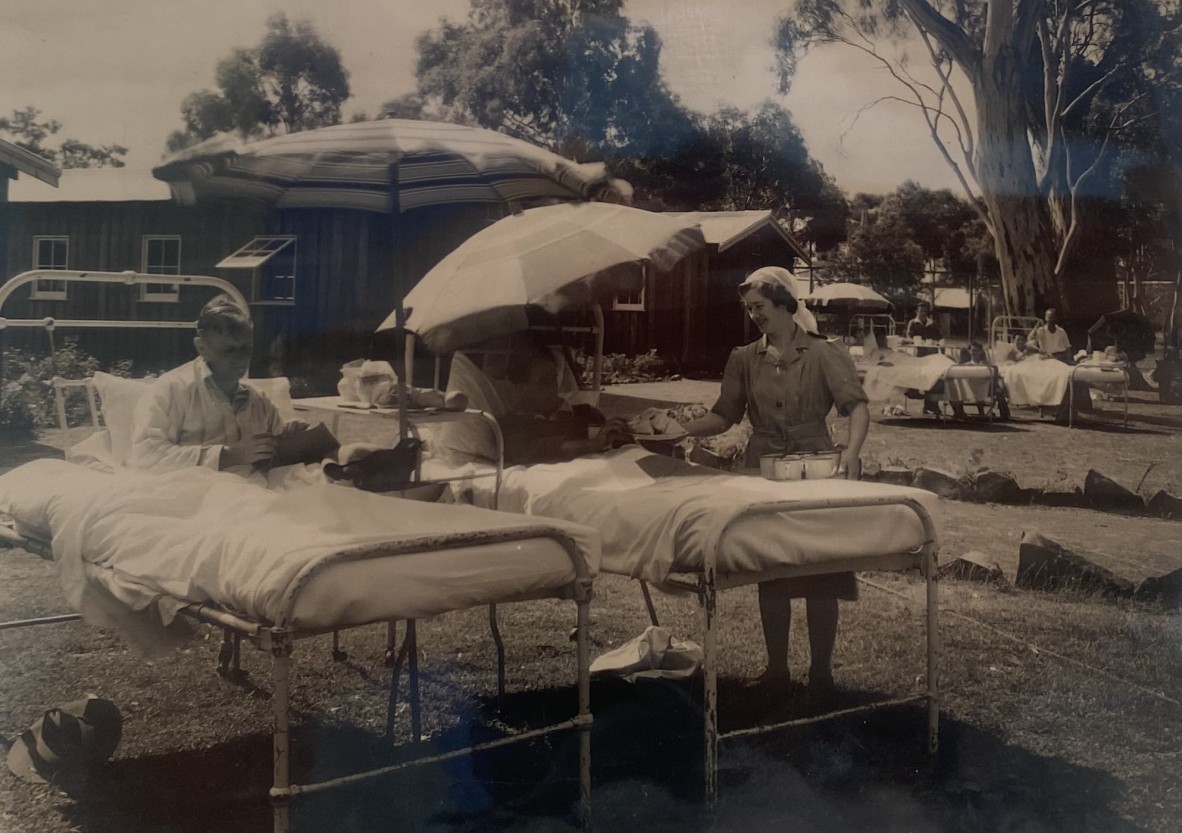
Photograph of an Australian Army Hospital in Queensland during World War Two 1942-1945.
Home backyard as places for connecting with loved ones
Backyards are places for family photos when soldiers returned from the frontline for leave. The photos below show a big brother hug and some family photos described by Fae Deviney Collins, nee King, photograph album 1886-2010.;whose big brother Don came home for summer leave and stayed with his family.
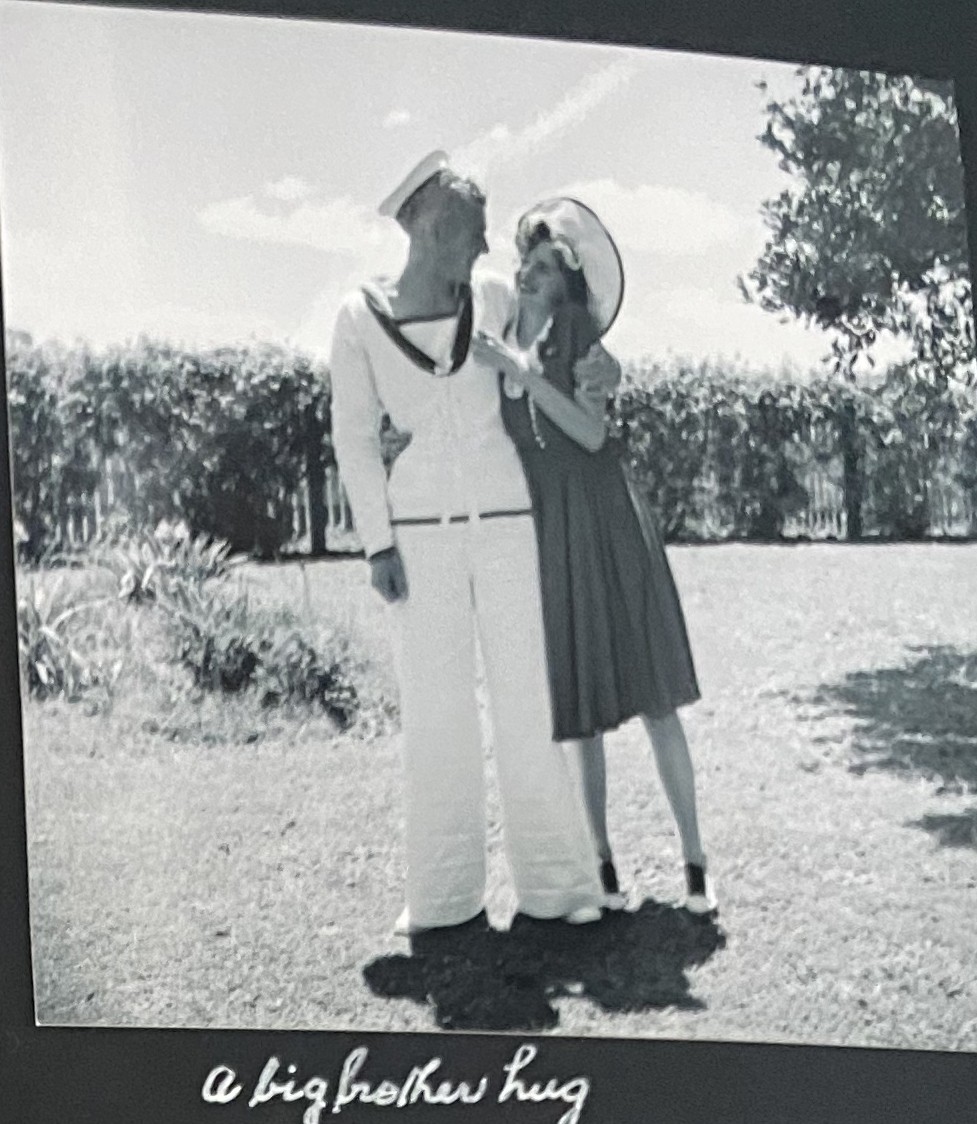
A sailor embraces his sister in their garden. Fae Deviney Collins, nee Kind, Photograph Album. 1886-2010. Acc. 31042. John Oxley Library, State Library of Queensland.
Dr Mimi Tsai
Other blogs by Mimi Tsai
- Garden stories in a time of pandemic digital storytelling pilot workshops
- Exploring therapeutic landscapes in Queensland histories: St Helena Prison farming
- Garden stories in a time of pandemic: workshop outcomes
- Drive in Theatres in Queensland
- Unearthing a Green Tradition in Queensland Schools: Arbor Day and school garden history
Dr Mimi Tsai's Youtube channel:
Comments
Your email address will not be published.
We welcome relevant, respectful comments.